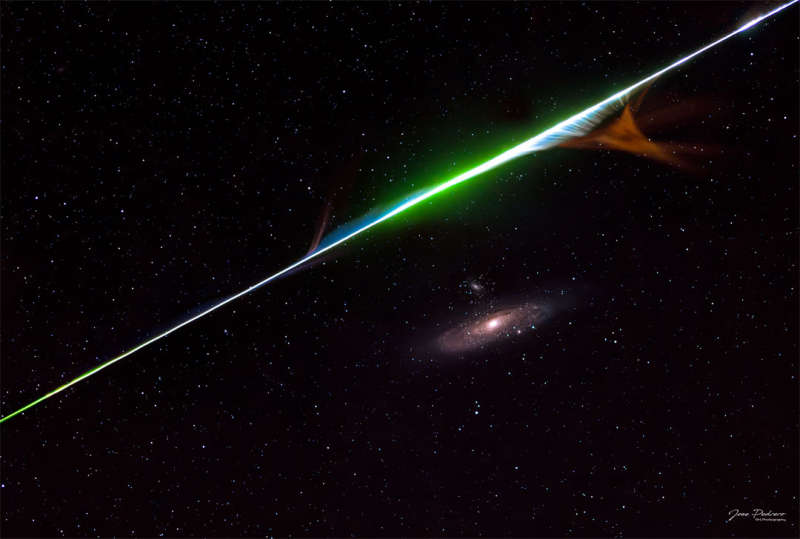
|
Credit & Copyright: Jose Pedrero
Explanation:
It came from
outer space.
It -- in this case a
sand-sized bit of a
comet nucleus -- was likely ejected many years ago from
Sun-orbiting
Comet Swift-Tuttle, but then continued to orbit the Sun alone.
When the Earth crossed through this orbit, the piece of comet debris impacted the
atmosphere of our fair planet
and was seen as a meteor.
This meteor deteriorated, causing gases to be emitted
that glowed in colors emitted by its component elements.
The featured image was taken last week from
Castilla La Mancha,
Spain,
during the peak night of the
Perseids meteor shower.
The picturesque meteor streak happened to appear in the
only one of 50 frames that also included the
Andromeda galaxy.
Stars dot the frame, each much further away than the meteor.
Compared to the stars, the
Andromeda galaxy (M31) is, again, much further away.
|
January February March April May June July August September October November December |
| ||||||||||||||||||||||||||||||||||||||||||||||||
NASA Web Site Statements, Warnings, and Disclaimers
NASA Official: Jay Norris. Specific rights apply.
A service of: LHEA at NASA / GSFC
& Michigan Tech. U.
Based on Astronomy Picture
Of the Day
Publications with keywords: meteor - M 31
Publications with words: meteor - M 31
See also:
